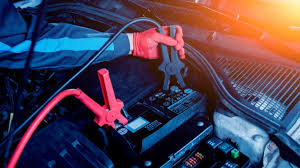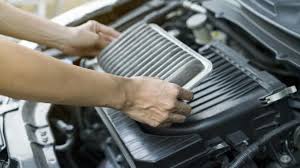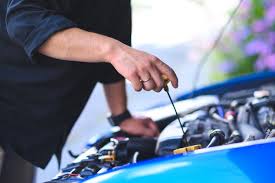How can I maintain my car myself?
Maintenance isn’t just about having your oil changed every 15,000 km or so, it’s about small, but important checks that will help to keep your car running smoothly and reliably, and safely.
GET TO KNOW YOUR CAR
- Establish a checking routine as soon as you take possession of your car and stick to it. Pick a day of the week and allocate a few minutes to go over a few essential things.
- Take the time to read the Owner’s Manual to familiarise yourself with the systems and features on your car.
WEEKLY CHECKS
- Familiarise yourself with the location of the engine oil dipstick, automatic transmission fluid dipstick, windscreen washer reservoir and cooling system reservoir and how to check the levels and replenish the fluids when needed. Checking these once a week will take no more than five minutes, and may save you thousands of dollars by preventing a breakdown.
- Also familiarise yourself with the tyre inflation pressures which should be checked weekly and reset as necessary. The recommended inflation pressures can be found in the Owner’s Manual and on a sticker attached to the body. It’s usually on the passenger’s side door pillar, but it may be located elsewhere. It’s location is detailed in the Owner’s Manual. When checking the tyre pressures don’t forget the spare tyre, there’s nothing more frustrating than suffering a puncture and finding that the spare is flat.
- While checking your tyres inspect them for damage that could end in a blow-out. Particularly look for bumps and bruises on the sidewalls front being driven into or over kerbs etc., and check the tread for cuts, splits and nails.
- It’s also worth familiarising yourself with the jack and how to change a wheel in the event of a flat. That way you won’t be stuck by the side of the road trying to work out how to use the jack while the traffic is thundering past a metre or so away.
- Familiarise yourself with your car’s warning lights and what they are telling you when they light up on the dash. The lights should all light up when you turn the ignition on as a way of checking they’re working. If any don’t come on during that ignition-on phase then have them checked because a faulty warning light may cost you thousands of dollars in repair bills if you miss aren’t aware of a fault.
- If a warning light comes on while driving, check it out. Don’t keep driving and assume it will go out. It’s worth taking a few minutes to investigate and assess the potential danger before driving on. Have a mechanic check the reason the warning light is illuminated.
MONTHLY CHECKS
- Once a month check your lights to ensure they’ll all in working order, including headlights, high and low beam, tail lights, reversing lights, front, rear and side turn signals, and brake lights. It’s a good way of involving the kids by having them tell you each light is working as you switch them on. If any are not working check the bulbs and replace any that have blown.

DIY Car Maintenance
As newer vehicles have become increasingly complex with onboard computers and high-tech gadgetry, maintenance jobs now often require a mechanic with the proper training and tools to correctly complete the task.
But there are still a few maintenance jobs that most men can do themselves on most models, and below I list three of the most accessible. It’s true that taking care of these tasks doesn’t save you very much in either time or money, but it is satisfying nonetheless and I recommend trying each job at least once, as they’ll give you a reason to look under your hood as well as a small bit of insight into how your trusted chariot works.
1. Change oil every 5,000 miles. We’ve written a guide on how to change your car’s motor oil yourself. But for those living in an apartment or dorm, this might not be an option. Whether you do it yourself or take it to a mechanic, getting your oil changed regularly is one of the most important ways of keeping your car running smoothly.
2. Change air filter every 12,000 miles. This is quite possibly one of the easiest car maintenance jobs you can do yourself. We wrote how to do it here. Regularly changing your car’s air filter will increase fuel efficiency, prolong your engine’s life, and reduce emissions.
While changing your car’s oil comes with the hassle of finding a way to dispose of the used oil properly, no such inconvenience exists for the air filter, and doing it yourself will easily save you half the cost of having a service shop take care of it.
3. Rotate tires every 5,000 to 10,000 miles. Front and rear tires wear differently. Regularly rotating your tires equalizes their natural wear patterns, ensuring a smoother and safer ride. It also extends the life of your tires, which will save you money on costly replacements

Replace spark plugs
Spark plugs are vital to your car’s engine running properly. They ignite a fuel and air mixture in the combustion chamber, which drives the piston down, turning the crankshaft. Your car has several pistons that work together to fully turn the crankshaft. Timing is essential, and even one spark plug misfiring or not working properly can dramatically affect your car’s performance, such as a loss of power, poor acceleration, misfires and it can even affect your ability to start the engine.
Changing spark plugs is a little more involved than checking fluids or replacing an air filter, but it can still be done at home quite easily.
In most cases, you’ll need one plug per cylinder, but some vehicles require two per cylinder. Check your owner’s manual for the correct number and types of plugs. Also, take note of the required gap. (You might want to pick up a gapping tool while you’re at the store, since this can be inadvertently bumped in transport and should be measured and corrected before installed.)
To replace spark plugs, first let the engine temperature cool. Then change spark plugs one at a time by gently removing the wire from the spark plug. Use a spark plug socket and torque wrench to remove the old spark plug. Measure the gap and install the new spark plug. (Some prefer to use antiseize lubricant with new spark plugs, but it’s not necessarily required and some spark plug manufacturers recommend not using it.) Reconnect the boot and repeat the process for each spark plug.

Battery Maintenance
Tools You Need: Wrenches, corrosion-removal fluid, wire brush, rags
The key to keeping your car running smoothly and efficiently is a good battery connection. Just a few specks of crunchy white residue on the posts can keep your car from starting. A simple visual check of the condition of your battery will tell you when you need to perform this process.
- Remove your battery terminals, which should be a fairly straightforward process. Make sure you always remove the negative cable first. If they’re stuck, use a flathead screwdriver to pry them loose.
- Clean the posts. Some say Coca-Cola will work, and it does, but I suggest using a more professional product from your local auto parts store. Keep in mind that most of these solutions are nothing more than baking soda and water, so if you’re feeling extremely frugal, feel free to create your own cleaner. Generously apply the fluid to the posts, and clean vigorously with your wire brush.
- Rinse the cleaning fluid with a little water.
- Dry the posts with rags.
- Replace battery terminals.
A dead battery can be one of the most frustrating car problems, because it’s usually so simple to avoid the trouble. Especially if you’ve had the same battery for a few years, pop your hood every few months and take a look at the battery to see if it needs a simple cleaning.
Replace a blown fuse
If something electronic on your car randomly stops working, like the lights, stereo or power windows, chances are it’s a blown fuse. Fixing a blown fuse is one of the easiest repairs you can do yourself.
Most modern cars have two groups of fuses in panels, one typically found beneath the steering wheel and the other under the hood.
You can often perform a visual inspection to find a blown fuse. Look for a fuse that appears slightly melted, or check the internal u-shaped wire. If the wire is separated, the fuse has blown. You may need to pull the fuse to inspect the wire. The good news is, if you know what has stopped working, you can immediately narrow the search by referencing the inside cover of the fuse panel lid and the owner’s manual. Many fuse boxes also come equipped with a fuse removal key, but a pair of needle nose pliers will also do the trick.
You can pick up a variety pack of fuses from an automotive parts store for a few bucks. Just make sure to get the correct size and type for your car. Many newer cars use shorter style fuses, which are not compatible with the older style fuses with longer leads.
Once you locate the blown fuse, remove it and replace it with a fuse rated for the same amperage.